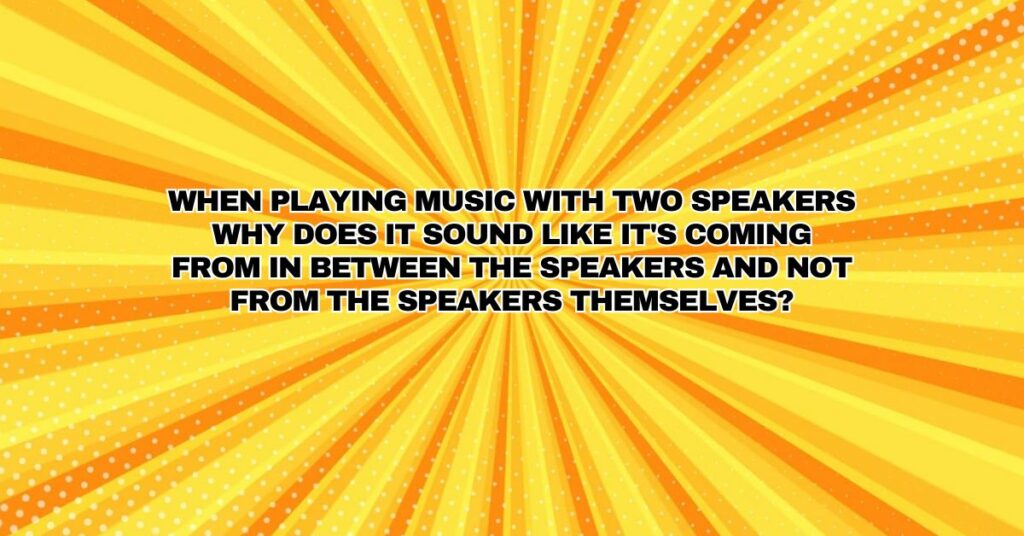When listening to music played through a stereo system with two speakers, you might notice a peculiar phenomenon: the sound seems to come from a point in-between the two speakers rather than directly from the speakers themselves. This intriguing auditory illusion is a result of a combination of factors related to audio perception, psychoacoustics, and the principles of sound propagation. In this comprehensive article, we will explore the science behind this phenomenon and why it creates a captivating and immersive listening experience.
Stereophonic Sound and the Phantom Center
The effect you describe is closely related to the principles of stereophonic or stereo sound. Stereo systems use two separate speakers to create a spatial audio experience. This spatiality is achieved through a phenomenon known as the “phantom center.”
The Phantom Center Effect
The phantom center is an auditory illusion that occurs when a sound source, in this case, the audio signal from both speakers, is perceived as originating from a point between the two physical sources. This illusion is fundamental to the immersive experience of stereo sound and has several key components:
- Time Delay: When an audio signal is fed to one speaker slightly before the other, the time delay between the two signals causes the brain to perceive a central sound image. This is a fundamental aspect of stereo recording and playback.
- Interference Patterns: As sound waves from both speakers reach your ears, they interact with one another. Depending on the phase and frequency of the waves, interference patterns are created. These patterns contribute to the perception of a central sound source.
- Binaural Hearing: Our brains use the differences in timing and intensity between the sound arriving at each ear to triangulate the source of a sound. Stereo speakers leverage these natural binaural cues to create the illusion of a central sound image.
Psychoacoustic Factors
Several psychoacoustic factors contribute to the compelling nature of the phantom center effect:
- Listening Experience: Listeners are accustomed to the stereo audio format, and our brains have learned to process stereo sound as if it’s coming from a central source. This is a product of repeated exposure to stereo audio content.
- Immersive Experience: The perception of a sound source in-between the speakers can create a more immersive and natural listening experience, as if the music is surrounding the listener.
Implications for Sound Design
The understanding of the phantom center is fundamental in sound design and audio engineering, as it enables producers and engineers to control the spatial aspects of audio content. By manipulating the phase, timing, and intensity of audio signals, sound engineers can precisely position sound sources within the stereo field. This control is used not only for music but also for film, video games, and virtual reality experiences to create a lifelike and immersive sound environment.
Conclusion
The phenomenon where music played through two speakers appears to originate from in-between them is a captivating aspect of stereo sound reproduction. It is achieved through the creation of a phantom center, where the brain interprets the audio signals from both speakers as emanating from a central point. This effect adds depth, dimension, and immersion to the listening experience, making stereo audio an essential element of music and audio production. Understanding the science behind the phantom center allows sound engineers and content creators to leverage this powerful illusion to craft captivating audio experiences for audiences around the world


